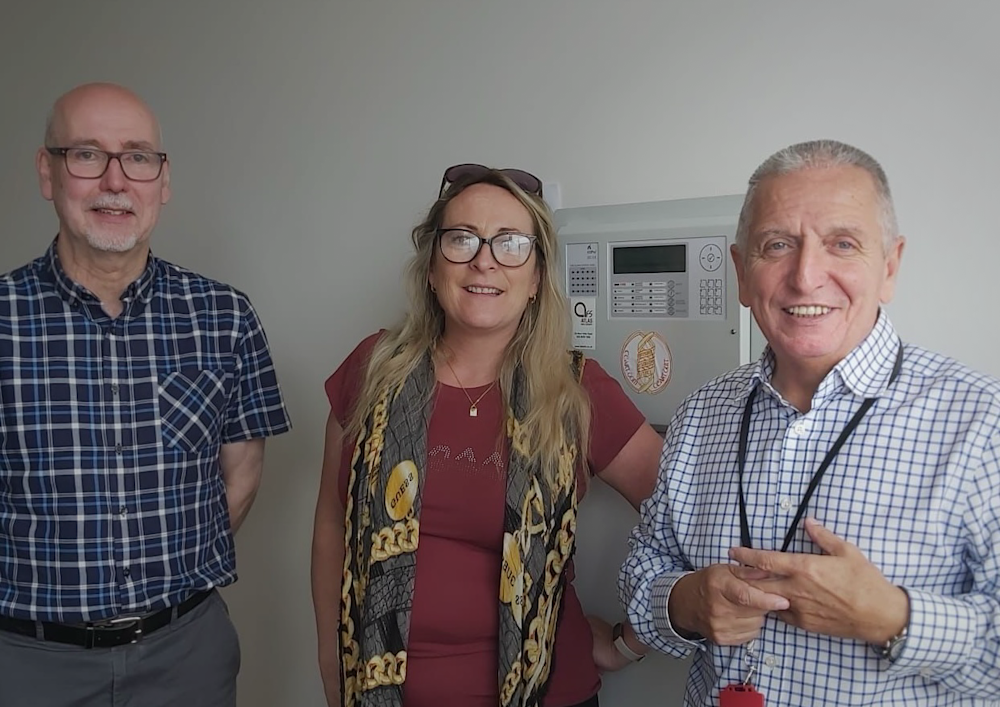A day in the life of...
A Day in the Life of Jim McCarthy - Featured in Resolution Magazine, Issue 77 (Spring 2025)

We’re proud to share a recent feature on our Director, Jim McCarthy, published in Resolution — a respected restorative justice and practice publication by the Restorative Justice Council.
In this insightful Q&A, Jim reflects on the values that shape his leadership at Community Restorative Justice Ireland, people who have influenced his journey, and the challenges and opportunities facing the restorative movement today.
Read the full feature below.
Summarise your job role in 10 words
- Leadership
- Community
- Dialogue
- Justice
- Repair
- Trust
- Accountability
- Support
- Reconciliation
- Change
Who has been the most significant influence on your thinking/practice on RJ/RP?
Two people stand out. Jo Berry’s story made a lasting impact on me. Her choice to meet the man responsible for her father’s death challenged my understanding of what real empathy and courage look like. It taught me that restorative work requires emotional depth and resilience, far beyond techniques and processes.
Closer to home, Father Alec Reid’s quiet and persistent work during the peace process in the North of Ireland shaped my approach to restorative thinking. His belief in the power of dialogue, even in the darkest moments, showed me that reconciliation demands patience, humility, and a deep commitment to human dignity. Both Jo and Father Alec taught me that while restorative work is rarely easy, it is always necessary.
What has been the single most significant impact of RJ/RP on your work?
Restorative practice changed the way I lead and listen. Earlier in my career, I believed that being effective meant delivering quick solutions. RJ/RP taught me that real change happens when we create the conditions for people to be heard, often for the first time.
It has slowed me down in the right way. It has taught me to sit with silence, to trust in the power of storytelling, and to value the process as much as the outcome. That shift has transformed how I engage with individuals, communities, and policymakers. Stronger relationships, built on trust and real listening, are the foundation for any lasting impact.
When it comes to implementing RJ/RP, what approach would you recommend: trying and failing or only focusing on where it will ‘work’?
Trying and failing. Without question. If we only work where success is guaranteed, we miss the greatest opportunities for change. Some of the most meaningful developments I have seen came from situations that were unpredictable and messy.
Restorative practice demands bravery — not just from participants, but from practitioners and leaders too. It is not about neat solutions but about building the capacity for people to have different kinds of conversations. Even when full resolution is not reached, the act of trying can open doors that would otherwise stay closed.
What is the single biggest challenge for RJ/ RP at the moment?
The biggest challenge is maintaining the integrity of the work as it grows.
As restorative practices become more widespread, there is a risk they are adopted in name only, reduced to a set of tools rather than a values-driven approach. Restorative justice demands time, trust, and a real shift in thinking — from retribution to repair, from blame to accountability.
If we lose sight of those core values, we risk losing the very essence of what makes RJ/RP powerful. Protecting the depth and authenticity of the work must remain a priority.
Where do you see RJ/RP moving next?
I believe we will see restorative approaches move even further into everyday life. They are already growing in schools and community settings, but I think the next step is wider cultural change — into workplaces, health care, and even public policy.
There is an increasing awareness that punitive systems are not working, and restorative thinking offers a different, relational way forward. If we can embed restorative principles into how we educate, govern, and live together, we can start to address conflict before it causes harm.
That is the real potential of this work.
If you could make everyone in the field read one book, it would be and why?
I would recommend The Little Book of Restorative Justice by Howard Zehr.
It captures the heart of what restorative work is about in a way that is simple and profound. Whenever I find myself drifting into process or procedure, it brings me back to what matters most: people, relationships, and repairing harm.
It is a grounding book that reminds practitioners and leaders alike that restorative justice is a way of seeing the world, not just a method.
You’re at the end of the rainbow and you’ve got that pot of gold. What next?
First, I would wish for good health and happiness for my loved ones and family. Without that, nothing else matters.
Then I would invest in building a centre for restorative innovation — a space that would serve as a living, breathing example of how restorative practice can be embedded into everyday life.
It would be a place where individuals, communities, and organisations could come together to learn, practice, and rebuild relationships. A place that embraces creativity, conversation, mistakes, and growth.
If we are serious about a restorative future, we need spaces where it is not just talked about but lived.